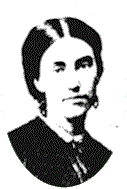Lady Barker only lived in New Zealand for three years but she turned her experience into two classic accounts of life on a sheep station in the early days of the Canterbury settlement. Station Life in New Zealand (1870) and Station Amusements in New Zealand (1873) have been reprinted many times.

Early life
Mary Anne Stewart was born in Spanish Town, Jamaica where her father was Island Secretary. She returned to England when she was aged two.
About 1852 she married a soldier, George Robert Barker. In 1859 he was knighted for his military service in India. Lady Barker went to Bengal, India in 1860 with her husband. In July 1861 he died and she returned to England. She remarried to Canadian-born Frederick Napier Broome, sportsman, poet, journalist and diplomat, in June 1865. Frederick Broome was 11 years younger than Lady Barker, and had immigrated to New Zealand when he was 15 years old. He met Lady Barker on a visit to England in 1864 and persuaded her to leave her two sons in England and travel with him to New Zealand.
Moving to New Zealand
Frederick and Mary Anne arrived at Lyttelton in October 1865. Broome and his partner bought Steventon, a sheep run of 9,700 acres on the Selwyn River near Whitecliffs. Mary Anne (or Lady Barker as she still called herself) spent her time writing in the morning and involving herself in the outdoor life of the station. After the great snowstorm of 1867 when they lost 4,000 out of 7,000 sheep, Frederick sold his interest in Steventon, returning with Lady Barker to England in December 1868.
'Station' books published
In 1870 Lady Barker published Station Life in New Zealand, based on the letters she had sent home to her younger sister, Jessie. It described life in Canterbury, from problems in housekeeping and entertaining visitors on the station, to travel on horseback and hunting wild cattle, and was a big success.
In 1873 she published a sequel, Station Amusements in New Zealand, which provided would-be settlers with information on buying land, coping with servants, and other problems.
They became classics of New Zealand literature and were reprinted many times in Britain and, more recently, here in New Zealand. Although criticised as exaggerated, her discerning eye and deft style provide memorable pictures of rural events, personalities, pursuits and problems. None was more arresting than her account of the great snowstorm of 1867.
The adventurous life continues
Lady Barker had six children. She continued to write and to travel, spending time in South Africa, Mauritius, Western Australia (where her husband Frederick was Governor), and Trinidad. She published 18 books including stories for children, a cookery book based on her skills learnt in New Zealand and books about her travel experiences.
Frederick Broome was knighted in 1884 and Lady Barker changed her name to Lady Broome. After her husband's death in 1896 in Trinidad Lady Broome returned to England where she died on 6 March 1911, in London.
Sources
- The Christchurch Writer’s Walkway, E. Beardsley, Canterbury Branch, New Zealand Society of Authors, 1999
- Dictionary of New Zealand Biography, vol. 1, 1769-1869. Wellington, 1990
Related links
- Lady Barker's books in our catalogue
- Betty Gilderdale, The Seven Lives of Lady Barker, 1996
- Lady Mary Anne Barker at the New Zealand Electronic Text Centre
- Life on a sheep station in the 1860s – more hilarious than you might think Post featuring amusing excerpts from Lady Barker's letters.
